|
Explanation: What a
wonderfully massive and armored creature! This is the leopard tortoise,
an inhabitant of dry African woodlands. We
encountered this specimen as it was cruising (well, ok, inching) on the dirt
roadway alongside Lake Bagoria in the Rift Valley of southern Kenya in east
Africa. 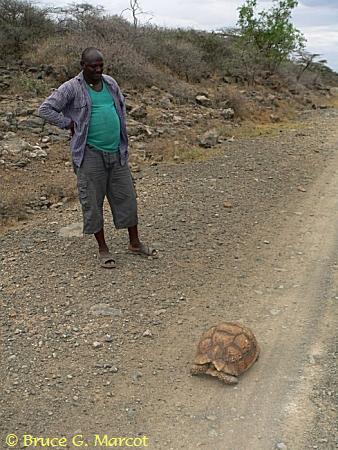
This
is where we discovered one leopard tortoise ... apparently liking the smooth
treadlines of this dirt road. Fearing it may become
a tortoise pancake, however, we relocated her to the adjacent woodland.
Leopard tortoises are
land-dwelling vegetarians. They walk on elephant-like stocky legs,
supporting their bodies on the tips of their forefeet. This
largest of the tortoises in east Africa is typified by its high-domed carapace
(top part of the shell) that roughly sports leopard-like markings on each of
the peaked scutes or plates. 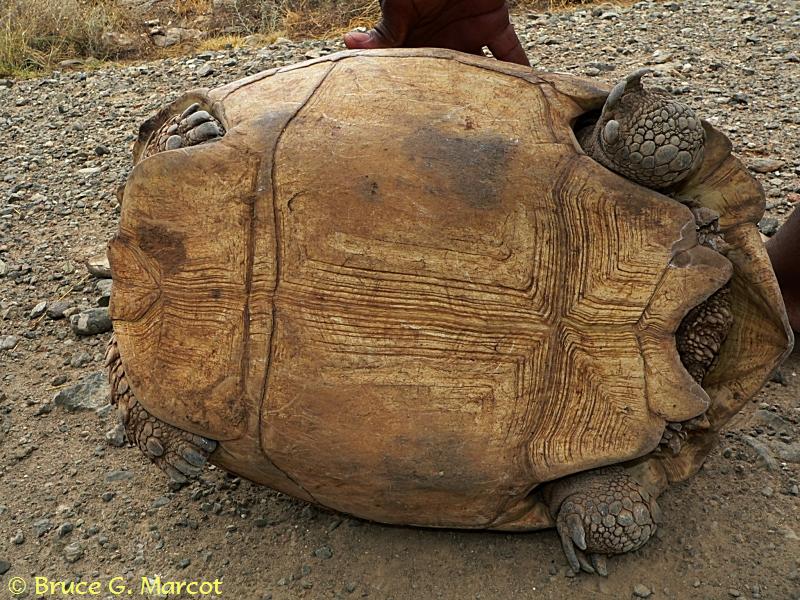 Aha,
this is likely a female. How can you tell? She doesn't
have indentations in the plastron or bottom shell. Such
indentations possibly are found only in the male (as in other turtle species)
and generally help the male mount the female during mating.
Leopard tortoises occur down through southern
Africa where they grow larger than those in the central part of the continent,
up to 700 mm (2.3 feet) in length and 40 kg (88 pounds) in weight. In
captivity they live at least 30 years, and perhaps up to 75 years.
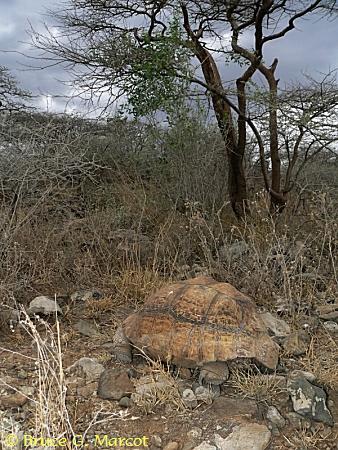
Here
is where we moved her to, from off the road. In her own pace, she ambled
off into the brush. Leopard tortoises can have rather huge home
ranges of 1-3 square kilometers (0.4-1.2 square miles), and can wander 5-10 km
(3-6 miles) to return to their home territory.
The young may be eaten by monitor
lizards, crows, storks, and mammalian carnivores, but the adults are like
slow-moving tanks that are threatened only by humans and the occasional tumble
down a rocky incline.
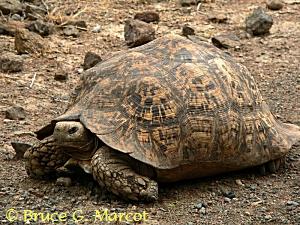
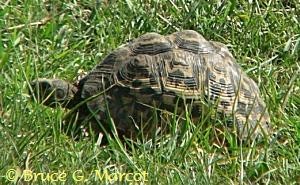
This is a very strikingly marked and attractive reptile.
Next week we continue the story of the Leopard
That Is A Tortoise, with a bit of a mystery about a tiny rider.
Information:
Branch, B. 1998. Field guide to snakes and other
reptiles of southern Africa. Ralph Curtis Books, Sanibel Island, Florida. 399
pp.
|
Index |
Location | Search | About EPOW | ... Next >